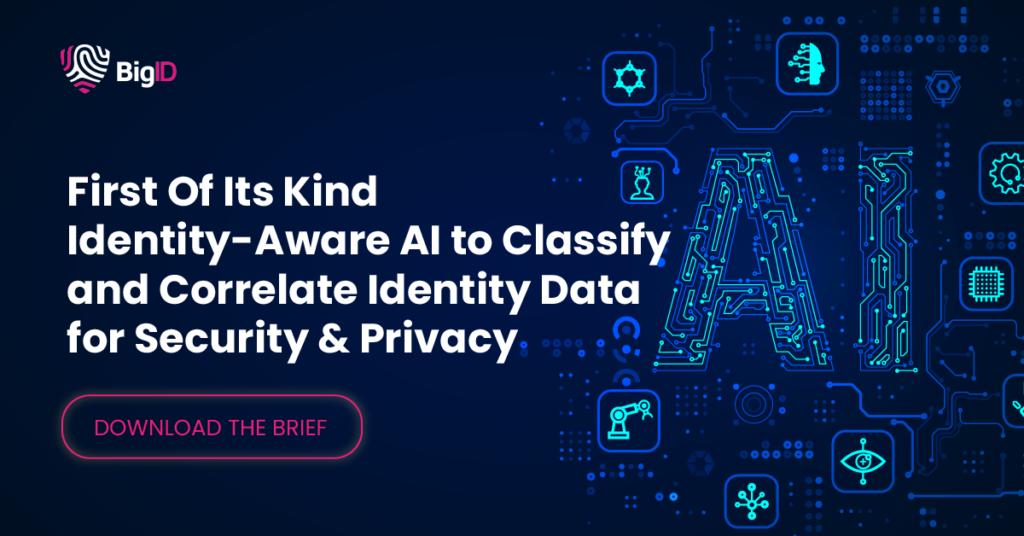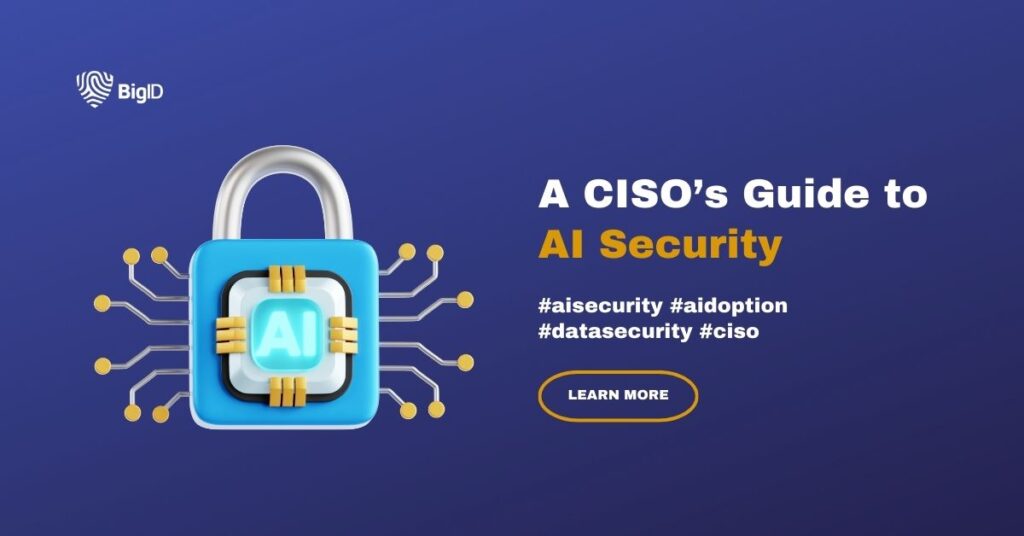A Comprehensive Guide to AI Security for CISOs: Challenges, Strategies, and Measuring Success
As Chief Information Security Officers (CISOs), the responsibility to safeguard an enterprise’s sensitive data grows increasingly complex in the era of artificial intelligence (AI). While AI presents unprecedented opportunities for innovation and efficiency, it also introduces novel threats that can compromise data integrity and privacy. To navigate this landscape, CISOs must adopt a proactive, multi-faceted approach to AI security. This guide delves deeper into AI security, providing CISOs with strategies to protect sensitive enterprise data, overcoming challenges, and measuring success.
Understanding the AI Security Threat Landscape
AI’s integration into enterprise systems expands the attack surface, exposing organizations to unique vulnerabilities. Threat actors can exploit AI models, manipulate data inputs, and leverage AI-powered tools to execute sophisticated attacks. Key threats include:
1. Adversarial Attacks: Manipulating Input Data to Deceive AI Systems
Adversarial attacks involve subtle modifications to input data that cause AI systems to make incorrect predictions or classifications. These attacks can significantly undermine the reliability of AI models.
Strategies to Mitigate Adversarial Attacks
Robust Model Training:
- Adversarial Training: Integrate adversarial examples into the training process. This involves exposing the model to various adversarial scenarios, helping it learn to recognize and handle such inputs.
- Data Augmentation: Enhance the training dataset with diverse, high-quality examples to improve the model’s generalization capabilities.
- Gradient Masking: Implement gradient masking to obscure the gradients used in generating adversarial examples, making it harder for attackers to exploit them.
2. Data Poisoning: Corrupting Training Data to Compromise AI Model Accuracy
Data poisoning involves injecting malicious data into the training set, causing the AI model to learn incorrect patterns or behaviors.
Strategies to Mitigate Data Poisoning
Data Quality Assurance:
- Data Validation: Implement rigorous data validation processes to ensure the integrity and quality of training data. This includes automated checks and manual reviews.
- Outlier Detection: Use statistical and machine learning techniques to detect and remove outliers that may indicate poisoned data.
Robust Training Techniques:
- Robust Learning Algorithms: Employ algorithms designed to be resistant to data poisoning, such as differential privacy and robust statistical methods.
- Data Sanitization: Regularly clean and sanitize the training data to remove potential contaminants. This includes techniques like clustering to identify and exclude anomalous data points.
Diverse Data Sources:
- Data Redundancy: Collect data from multiple, independent sources to reduce the risk of a single point of compromise. Cross-referencing data from different sources can help identify inconsistencies.
- Data Versioning: Implement version control for training datasets to track changes and detect suspicious modifications.
3. Model Inversion: Extracting Sensitive Data by Querying AI Models
Model inversion attacks involve querying AI models to infer sensitive information about the training data, potentially leading to data breaches.
Strategies to Mitigate Model Inversion
Model Hardening:
- Differential Privacy: Incorporate differential privacy techniques during model training to add noise to the data, making it difficult to extract specific information about individual data points.
- Secure Multiparty Computation: Use secure multiparty computation techniques to perform computations on encrypted data, ensuring that no single party has access to the full dataset.
Access Controls:
- Authentication and Authorization: Enforce strict authentication and authorization mechanisms for accessing AI models, ensuring only authorized users can query the models.
Output Obfuscation:
- Prediction Limitation: Limit the detail and granularity of model outputs to reduce the risk of sensitive information leakage. For example, providing category-level predictions rather than detailed probabilistic outputs.
- Query Monitoring: Monitor and log all queries made to the AI model to detect and investigate suspicious patterns indicative of model inversion attempts.
4. AI-powered Cyberattacks: Using AI to Automate and Enhance Attack Capabilities
AI-powered cyberattacks involve using AI and machine learning to automate and enhance the effectiveness of cyberattacks, making them more adaptive and scalable.
Strategies to Mitigate AI-powered Cyberattacks
AI-driven Defense Mechanisms:
- Threat Intelligence: Use AI to aggregate and analyze threat intelligence data, enabling proactive defense against emerging AI-powered threats.
Advanced Threat Detection:
- Real-time Monitoring: Implement real-time monitoring and analysis of network traffic and system logs using AI-based tools to detect suspicious activities quickly.
- Deception Technologies: Deploy deception technologies such as honeypots and honeynets, which can lure and analyze AI-powered attacks, providing valuable insights into attack strategies and methods.
Collaboration and Information Sharing:
- Industry Collaboration: Participate in industry forums and threat intelligence sharing platforms to stay informed about the latest AI-powered attack vectors and defensive measures.
- Red Teaming: Conduct regular red teaming exercises where internal or external security experts simulate AI-powered attacks to test and improve the organization’s defenses.

Building a Robust AI Security Framework
To protect against these threats, CISOs must develop a comprehensive AI security strategy that integrates with existing cybersecurity measures. This framework should encompass the following pillars:
Data Integrity and Protection
Data is the backbone of AI systems. Ensuring its integrity and confidentiality is paramount:
- Data Encryption: Employ robust encryption protocols for data at rest and in transit.
- Data Anonymization: Implement techniques to anonymize sensitive data used in AI models.
- Access Controls: Enforce strict access controls and audit logs to monitor data usage.
AI Governance and Compliance
Effective governance ensures AI systems are secure and compliant with regulations:
- Regulatory Compliance: Stay informed and comply with relevant regulations such as GDPR, CCPA, and industry-specific standards.
- Ethical AI Practices: Develop and enforce policies for ethical AI use, focusing on transparency, fairness, and accountability.
- Incident Response Plans: Create and regularly update incident response plans tailored to AI-related security breaches.
Leveraging Advanced Technologies for AI Security
Advanced technologies can enhance AI security measures, providing CISOs with powerful tools to defend against evolving threats:
Collaboration and Continuous Improvement
AI security is a dynamic field requiring ongoing collaboration and adaptation:
- Industry Collaboration: Engage in industry forums and partnerships to share knowledge and best practices.
- Continuous Training: Invest in training programs to keep security teams updated on the latest AI security trends and techniques.
- Research and Development: Allocate resources to R&D for developing innovative AI security solutions.

How CISO’s Measure Success
Key Performance Indicators (KPIs)
Establishing and tracking KPIs can help measure the effectiveness of AI security strategies:
- Incident Response Time: Measure the time taken to detect and respond to AI-related security incidents.
- False Positive Rates: Track the rate of false positives in threat detection systems to ensure accuracy.
- Compliance Metrics: Monitor adherence to regulatory requirements and internal security policies.
Regular Audits and Assessments
Conducting regular security audits and assessments can provide insights into the effectiveness of AI security measures:
- Vulnerability Assessments: Regularly assess AI systems for vulnerabilities and address them promptly.
- Penetration Testing: Perform penetration testing to identify and mitigate potential security weaknesses.
Proactive AI Security for a Resilient Future
For CISOs, safeguarding sensitive enterprise data in the age of AI demands a proactive, multi-layered approach. By understanding the unique threats posed by AI, building a robust security framework, leveraging advanced technologies, and fostering continuous improvement, organizations can protect their data and maintain trust in their AI systems.
How CISOs Can Leverage BigID for AI Security
In this rapidly evolving landscape, staying ahead of threats and ensuring the security of AI systems is not just a necessity—it’s a strategic imperative.
With BigID CISO’s can:
- Find & Classify Sensitive Data: A critical aspect of AI security is understanding where data comes from and how it flows through an AI system. BigID equips CISOs to identify all sensitive data feeding into AI models. This includes uncovering not just personal information (PII) but also financial data, intellectual property, and other critical assets that could be exploited if compromised within an AI system.
- Minimize Data Exposure: BigID assists CISOs in minimizing the amount of data exposed to AI models. By identifying and removing unnecessary data points, CISOs can reduce the attack surface and limit the potential damage caused by a security breach targeting AI models.
- Automate AI Policy Enforcement: Automate policies, governance, and enforcement across the data inventory – based on risk, location, type, sensitivity, and more. By automatically flagging data usage that violates pre-defined policies, BigID ensures your AI models operate within ethical and legal boundaries.
- Pinpoint AI Risk: Maintain the integrity of generative AI pipelines and proactively manage risk in AI models. With BigID, you can pinpoint potential risks, including personal and sensitive information exposed to unauthorized access, ensuring your data is secure for LLMs and generative AI usage.
- Speed Up AI Adoption: With BigID, you can prepare data to ensure it is safe for LLM and Gen AI and reduce the risk of data leaks and breaches. Enforce controls across the data landscape to maximize the impact of AI and validate data for responsible AI adoption.
To learn more about how BigID can help bolster your AI security— book a 1:1 demo with our security experts today.



